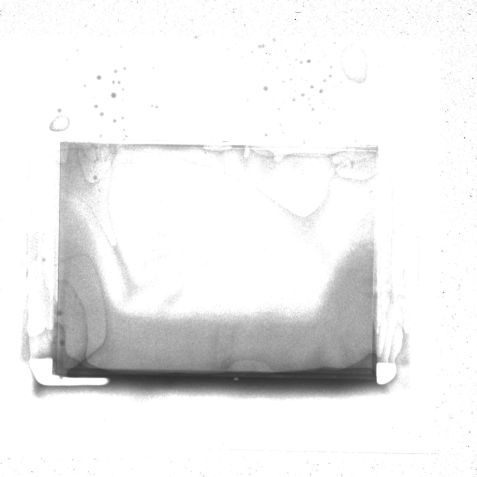MLZ is a cooperation between:
 > Technische Universität München
> Technische Universität München > Helmholtz-Zentrum Hereon
> Helmholtz-Zentrum Hereon
 > Forschungszentrum Jülich
> Forschungszentrum Jülich
MLZ is a member of:
 > LENS
> LENS > ERF-AISBL
> ERF-AISBL
MLZ on social media:

MLZ (eng)
Lichtenbergstr.1
85748 Garching
10.10.2016
“Webcam” for battery production
Usually, the battery cells are filled in vacuum, sealed and then stored until the electrolyte is evenly distributed. In the much larger pouch cells, this process takes much more time than it takes for the usual small household batteries, firstly because of the longer flow paths; the other is the risk of more air pockets by the greater volume. Here money can be saved, if the process can be made more efficient through better distribution of liquid and if thus allows a shorter storage period. “Although this process is not at all unknown and some patents have been applied to it, it is scientifically not really understood. Previously, we only could speculate about what happens inside the cell during the filling” says Thomas Knoche. “We wanted to change that, especially as we found across the street on the campus the right neutron instrument: ANTARES.” In the frame work of the BMBF project ExZellTUM engineers and physicists at ANTARES have built an automatic filling system and were using neutron radiography to watch the pouch cell’s filling. They were able to directly observe how the electrolyte is distributed between the electrodes. The battery cells were made at iwb in a production line specially established for research purposes.
The neutron radiography has been found as extremely helpful for these experiments. The scientists were able to draw valuable conclusions on the production process. The electrolyte must flow into the cell in one direction, so that the risk of gas inclusions is reduced. Removing air bubbles after the electrolyte filling process is associated with considerable technical effort. Moreover, air bubbles can be hardly detected except by neutron radiography. The exact position of the filling needle and the applied pressure play an important role for the exact filling. Ralph Gilles from MLZ explains this effect: “We were able to find out that by lowering and increasing the pressure the electrolyte fluid distributes better between the electrodes.” Engineer Thomas Knoche adds: “This result is very important for the development of process technology and can definitely reduce the manufacturing costs of such batteries.”
Original publication including video:
Thomas Knoche, Veronika Zinth, Michael Schulz, Joscha Schnell, Ralph Gilles, Gunther Reinhart;
In situ visualization of the electrolyte solvent filling process by neutron radiography;
Journal of Power Sources 331, 267
MLZ is a cooperation between:
 > Technische Universität München
> Technische Universität München > Helmholtz-Zentrum Hereon
> Helmholtz-Zentrum Hereon
 > Forschungszentrum Jülich
> Forschungszentrum Jülich
MLZ is a member of:
 > LENS
> LENS > ERF-AISBL
> ERF-AISBL
MLZ on social media:



